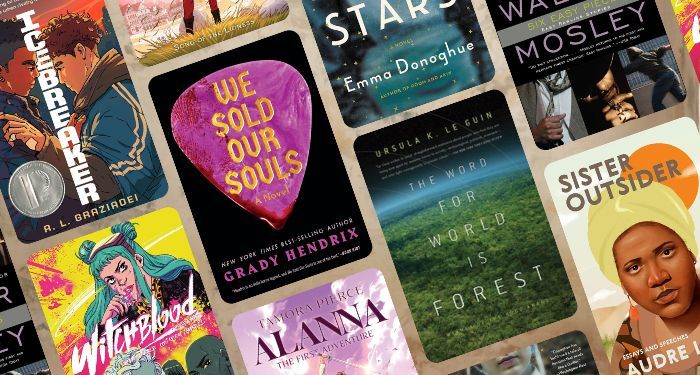With my new book PR Confidential: Unlocking the Secrets to Creating a Powerful Public Image, my goal was to demystify the often-misunderstood public relations industry by answering questions frequently posed by business leaders in an “advice column” format. The following excerpt captures many of the conversations I have with CEOs and start-up founders who are interested in doing public relations.
Dear PR Pro: From what you’ve told me, I need a marketing plan and marketing research. I might want to do advertising, and if I have something to sell, I’ll need to hire a sales team. Gotta say, that seems like more than enough. Maybe my partner is right and there really is no need for PR. —OUTTA HERE
Dear Outta Here:
It’s a fair point, and one to consider carefully. Ultimately, you’ll decide whether PR should be a part of your strategy. We already discussed how PR generates awareness and action. And how our work is about convincing people to pay attention to you instead of selling to them, which is advertising. That brings me to the next big topic: How?
Advertising is often called “paid media” as ads are messages that are bought and placed in order to tell people what to think. PR aims to convince people or shift their perception of something. For that reason, it happens primarily through what we call “earned media.” PR professionals work with existing media channels to get our clients’ stories included.
Make sense?
Dear PR Pro: Ummmm. No, not at all. I think I’m more lost than before. —HEAD SPINNING
Dear Head Spinning:
Your reaction is pretty common, honestly. I talk to a lot of people who have a general understanding of what PR is, but this is the part that trips them up. Maybe the best way to make things clearer is with a story.
We’ll use a hypothetical business, which I will call Blarg, Inc. The good people at Blarg have hired us to promote their new product, which we’ll call Widget. On our side, the public relations team is thrilled to hear that Blarg has done all of their marketing work before coming to us. They have a plan and plenty of research. They know all about their competition and are clear on the four P’s of Marketing: Product, Price, Place and Promotion.
The Blarg team has also tested Widget extensively and they know their sales team can sell it. Now they need to get the word out.
Let’s say that Blarg has done some advertising. They purchased a traditional ad on television or maybe even something bigger, like a billboard. Blarg knows the value of digital media too, and they have posted about Widget on their social media channels and purchased digital ads in those spaces. Unfortunately, advertising isn’t taking them far enough.
The leaders at Blarg know they need to generate the kind of awareness that only comes from earned media. They are certain that building that particular type of excitement for Widget will make all the difference in the success of its launch.
That means it’s our turn. The PR team starts by developing a plan to attract that all-important earned media. It might include tactics like helping Blarg become a part of industry and consumer conferences, submitting them for awards, or finding opportunities for their leaders to give speeches at prominent events.
Blarg also wants to reach more defined groups, such as investors, partners, and even their own employees. Our PR plan might include company newsletters, intranets, or invitation-only informational events. All of those elements are commonly part of a PR plan, and they do qualify as earned media in that we are using non-paid channels—the ones people trust—to share information.
In our hypothetical scenario here, some (or all) of those tactics would be a part of the Blarg/Widget PR plan. However, they would not be the main focus. Since Blarg is hiring us to get the public interested in Widget, by far the most critical piece of our strategy would be earning news coverage.
That part of the program is always more complex, highly strategic, and closely managed. Here’s how it works: The PR team reaches out to news reporters we believe will be interested in writing a story about Blarg or Widget (sometimes both) and works with them to get that story written. By identifying many different reporters and story angles, we help Blarg win a variety of earned media coverage. In turn, that news will be read by the people who have the most interest in Blarg and their product, Widget.
I hope that by now you understand the benefit of earned media. If we had actually worked for Blarg, we would have reached potential customers through news instead of an ad or a sales pitch. And because a news story is generally seen as more credible than a message that’s been bought, we would have been able to more positively influence people’s opinions.
Dear PR Pro: Let me get this straight: your job is to get reporters to write news stories about my company? How the heck do you do that? —NEWS IS NEWS
Dear News is News:
As to your first question: believe me, we hear that a lot. The simple answer is yes. Many people simply don’t realize that much of the news they see reported every day was influenced by public relations.
Yes, really.
Your second question will take a little longer to answer. How do we do it? It’s often not easy. But if we want to be successful, we know to start any media relations effort with a compelling narrative, or as I like to put it, Story with a capital S.
Story gets to the heart of how the business wants to be perceived. In fact, after getting started with a new client and learning their business objectives, Story is always our next discussion.
We spend a lot of time talking and brainstorming to uncover all the details of it. Then we work together until everyone clearly grasps how the client wants the public to understand their business, product, or service.
Sometimes the thing we’re promoting already exists. In those cases, we research how people think of it now. Ultimately, our goal is to agree on how the client wants their business, product, or service to be seen in the future.
Once we have that decision made, the PR team builds the Story to make the desired perception, or shift in perception, happen.
This is excerpted from PR Confidential: Unlocking the Secrets to Creating a Powerful Public Image by Amanda Proscia. PR Confidential is available now. The excerpt below is reprinted here by permission of the author; all rights are reserved.
Written by Amanda Proscia.
Have you read?
Ranked: The World’s Most Powerful Countries For 2023.
Ranked: Countries with the highest share of women in parliament.
The World’s Largest Gold Producing Countries, 2023.
Ranked: The World’s Most Influential Countries, 2023.
Ranked: World’s Most Forward-Thinking Countries, 2023.
Add CEOWORLD magazine to your Google News feed.
Follow CEOWORLD magazine headlines on: Google News, LinkedIn, Twitter, and Facebook.
Thank you for supporting our journalism. Subscribe here.
For media queries, please contact: info@ceoworld.biz







































































